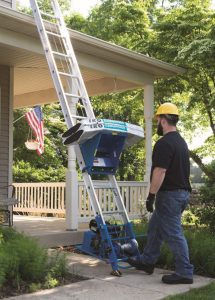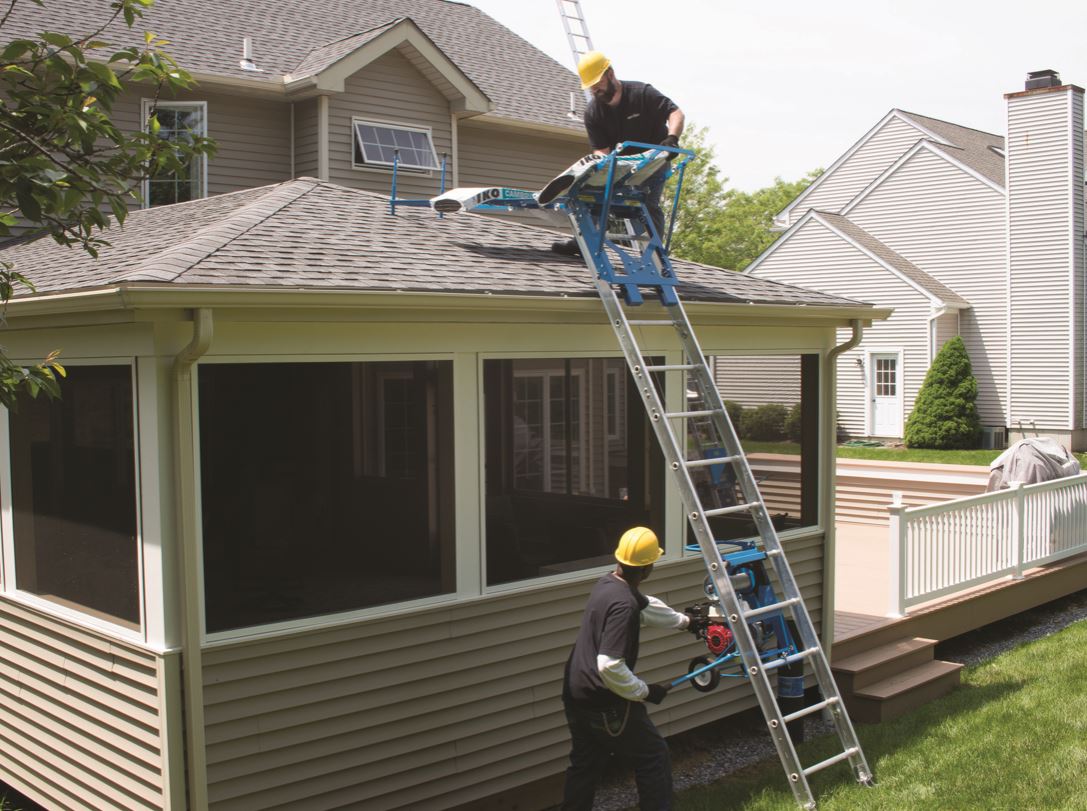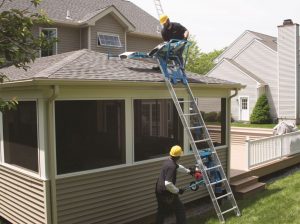Earthquake-resistant roofing: After an earthquake, the collapse of poorly constructed concrete roofs and walls leads to significant injuries and death. This is especially true in economically disadvantaged countries where building codes are absent and financial resources are limited. Lighter roofing materials like aluminum and other metals pose less risk for earthquake survivors, and disaster-resistant monolithic shells made of reinforced concrete show real promise.
Hurricane-resistant roofing: Clay tiles and concrete tiles hold up better than wood and other types of shingles in hurricane conditions. In Guam, monolithic domes made completely of reinforced concrete have withstood both earthquakes and hurricanes for 50 years.
Tornado-resistant roofing: Unlike earthquake zones and likely hurricane pathways, tornado-prone areas have no international code for building. Keeping the roof on a building may prevent the walls from collapsing and heavier materials like reinforced concrete seem to best suit this purpose. Insulating concrete forms (ICFs) are being used for roofing but serve more for insulation than for structural integrity in a storm. Once again, reinforced concrete building materials hold up the best. Kenneth Luttrell, PE/CE/SE, MACI, and Joseph Warnes, PE/CE, FACI, FPCI provide detailed analysis in their study titled “Hurricane and Tornado-Resistant Concrete Houses.”
Of course, the very materials that make buildings resistant to natural disasters—especially the reinforced concrete and clay tiles that stand up to hurricanes and tornadoes—present a greater worker safety risk due to their size and weight. You can still get those bulky, heavy materials to the roof and safeguard worker well-being if you choose the right material hoist to prevent falls, decrease injuries, and minimize the chances of both non-fatal and fatal accidents.
Material Transport Options and Risks
Roofing jobs include inherent costs and risks. Transporting materials to the roof is labor-intensive, hazardous work when you must manually carry objects up a ladder. Bulky and/or heavy items increase the risk of accidents, including falls that can lead to death. If you violate the Occupational Safety and Health Administration’s “three points of contact” regulation regarding ladders, you face stiff fines. Boom trucks and roofing conveyors may partially eliminate some of this risk, but they require operator training, rental fees and significant space. They can also potentially cause property damage to driveways, lawns and landscaping. These machines can fail to unload materials safely away from the edge of the roof, which is precisely where you want them. In many cases, an OSHA-approved material hoist is the better, safer alternative.

A platform hoist can decrease the risk of injuries, minimize OSHA infractions, prevent accidents and reduce worker fatigue.
OSHA Regulations
OSHA ruling 29 CFR §1910.28(a), which took effect in January 2017, puts the responsibility for worker safety—especially the testing and certification of fall-protection systems—on the building owners who hire roofing contractors. Employers must now provide fall protection for employees who will be walking or working on a surface with an edge that is four or more feet above the ground. Depending on the fall danger, employers are free to choose from guardrails, personal fall arrest (PFA) systems, safety nets, travel-restraining systems, or warning lines that mark a designated work area near a low drop-off.
This ruling revised previous industry rules regarding falling, slipping and tripping in the workplace so that the construction rules and the general industry rules are more closely aligned. Unfortunately, repair work—governed by OSHA’s mandate 29 CFR §1926 for the construction industry—and maintenance work—regulated by 29 CFR §1910 for general industry—are still ambiguous.
A provision for ladders is also included in the new ruling. A cage, ladder safety system (a body harness and connectors, carrier, lanyard, or safety sleeve), a PFA system, or a well must be included on fixed ladders installed before Nov. 19, 2018, that extend more than 24 feet from a lower level. On or after that date, fixed ladders must include a ladder safety system or a PFA to eliminate or reduce the likelihood of falls.
Under the new regulation, roofing contractors using these fixed ladders must ensure their workers’ safety with a cage, ladder safety device, self-retracting lifeline or well. Rest platforms are also required, depending on the height of the fixed ladder. Rope descent systems (RDSs) and their anchorages must be tested and certified in writing by the building owners.
In addition to regulating how workers should be protected from falls, OSHA also monitors how objects are carried and loaded/unloaded. For those doing manual lifting, OSHA states that:
- Every person going up and/or down a ladder will grasp the ladder with at least one hand at all times, maintaining three points of contact with the ladder—either with two hands and one foot or one hand and two feet.
- Workers must not carry loads and objects that might cause them to slip or fall.
- All ladders, including portable extension ladders, fall under these OSHA rules.
- Ladders must support four times their intended load unless they are labeled “rugged use, extra-heavy-duty,” in which case they are require to support a minimum of 3.3 times their 375-pound capacity.
- No load is allowed to exceed the published weight limit.
- Ladders may only be used for their intended purpose.
- Non-self-supporting ladders must be tilted at an angle so the base of the ladder is one-quarter of the working length of the ladder away from whatever is supporting the top of the ladder.
Choose an OSHA-approved ladder hoist to meet these safety standards.
Material Hoists
For your workers’ safety, choose a material hoist company committed to your safety and to excellence, quality and service. Their products should easily transport up to 400 pounds of materials to high rooftops, keeping your team off of ladders. By handling the bulky, unstable and heaviest objects, a platform hoist decreases the risk of injuries, minimizes OSHA infractions, prevents accidents and cuts workers compensation claims. It also reduces worker fatigue.
Look for a ladder hoist designed to accommodate all types of building materials. This includes the new, heavier shingle packages that increase efficiency by increasing the number of shingles (and therefore the weight) of each shingle package. Also take into account the heavier materials that have proven their worth in areas prone to earthquakes, hurricanes and tornadoes including:
- Clay tiles, which can weigh up to 2,000 pounds/100 square feet
- Concrete tiles, which can weigh up to 700 pounds /100 square feet
- Reinforced concrete, which varies in weight due to thickness
- Slate tiles, which can weigh up to 1300 pounds /100 square feet
Product Attachments
Choose a ladder hoist with product attachments that can handle the bulkier materials required for natural-disaster-resistant construction. An unloading ramp automatically unloads away from the roof’s edge, increasing safety and efficiency. Custom support braces stabilize your hoist or “laddervator,” protecting workers at greater heights. A plywood carrier can transport bulky material like rolled goods, sheets of metal or plywood, skylights, and trusses, keeping workers safe from carrying unwieldy items up a ladder one-handed.
Don’t let unwieldy, heavy objects or special materials that have proven their effectiveness in natural disaster zones keep you from a great safety record. Start with an OSHA-compliant platform hoist.
Learn more about this latest regulation at OSHA’s fall protection page.





Be the first to comment on "Follow Proper Safety Standards and Procedures When Loading Materials on the Roof"